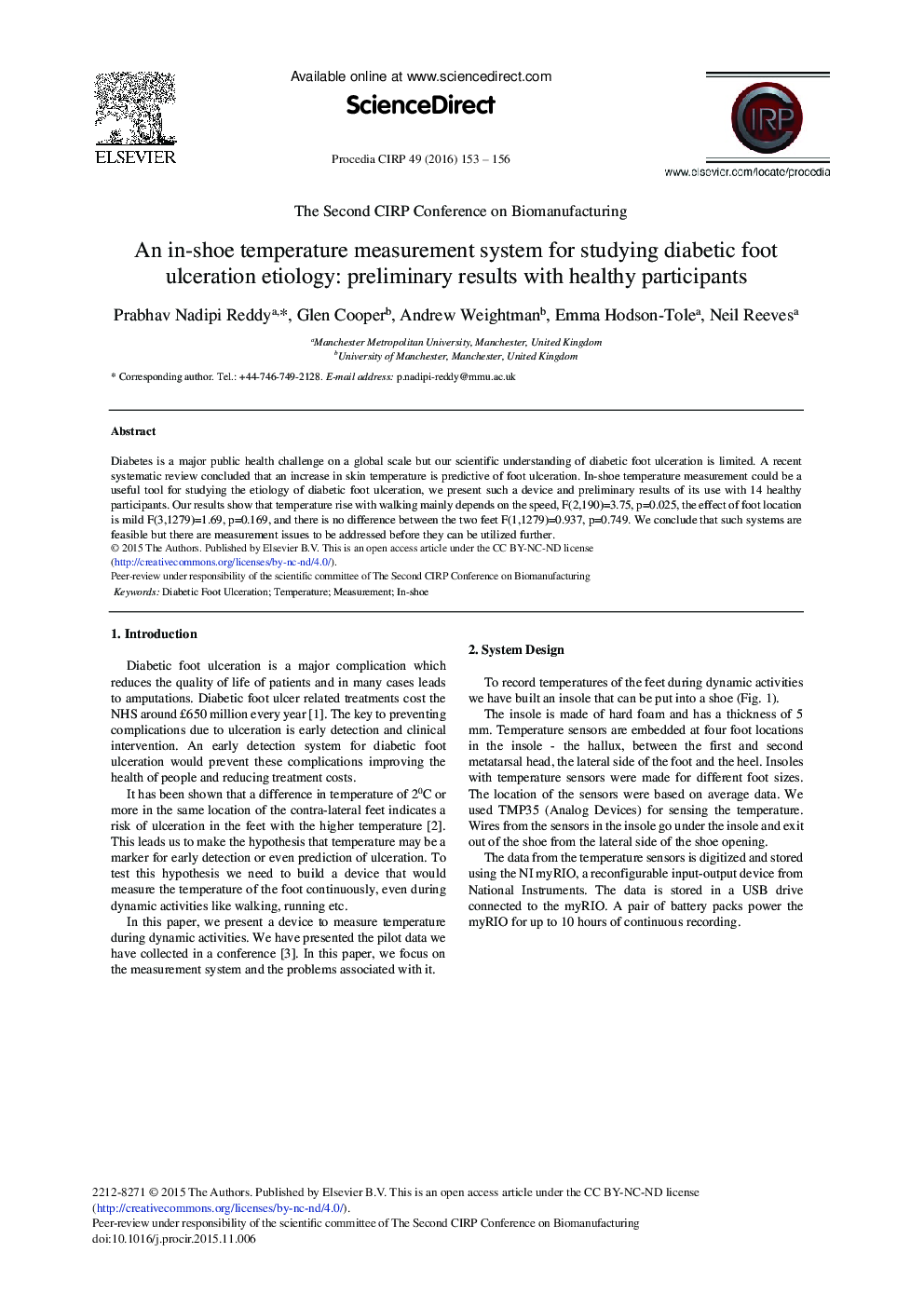| Article ID | Journal | Published Year | Pages | File Type |
|---|---|---|---|---|
| 1698245 | Procedia CIRP | 2016 | 4 Pages |
Diabetes is a major public health challenge on a global scale but our scientific understanding of diabetic foot ulceration is limited. A recent systematic review concluded that an increase in skin temperature is predictive of foot ulceration. In-shoe temperature measurement could be a useful tool for studying the etiology of diabetic foot ulceration, we present such a device and preliminary results of its use with 14 healthy participants. Our results show that temperature rise with walking mainly depends on the speed, F(2,190)=3.75, p=0.025, the effect of foot location is mild F(3,1279)=1.69, p=0.169, and there is no difference between the two feet F(1,1279)=0.937, p=0.749. We conclude that such systems are feasible but there are measurement issues to be addressed before they can be utilized further.
